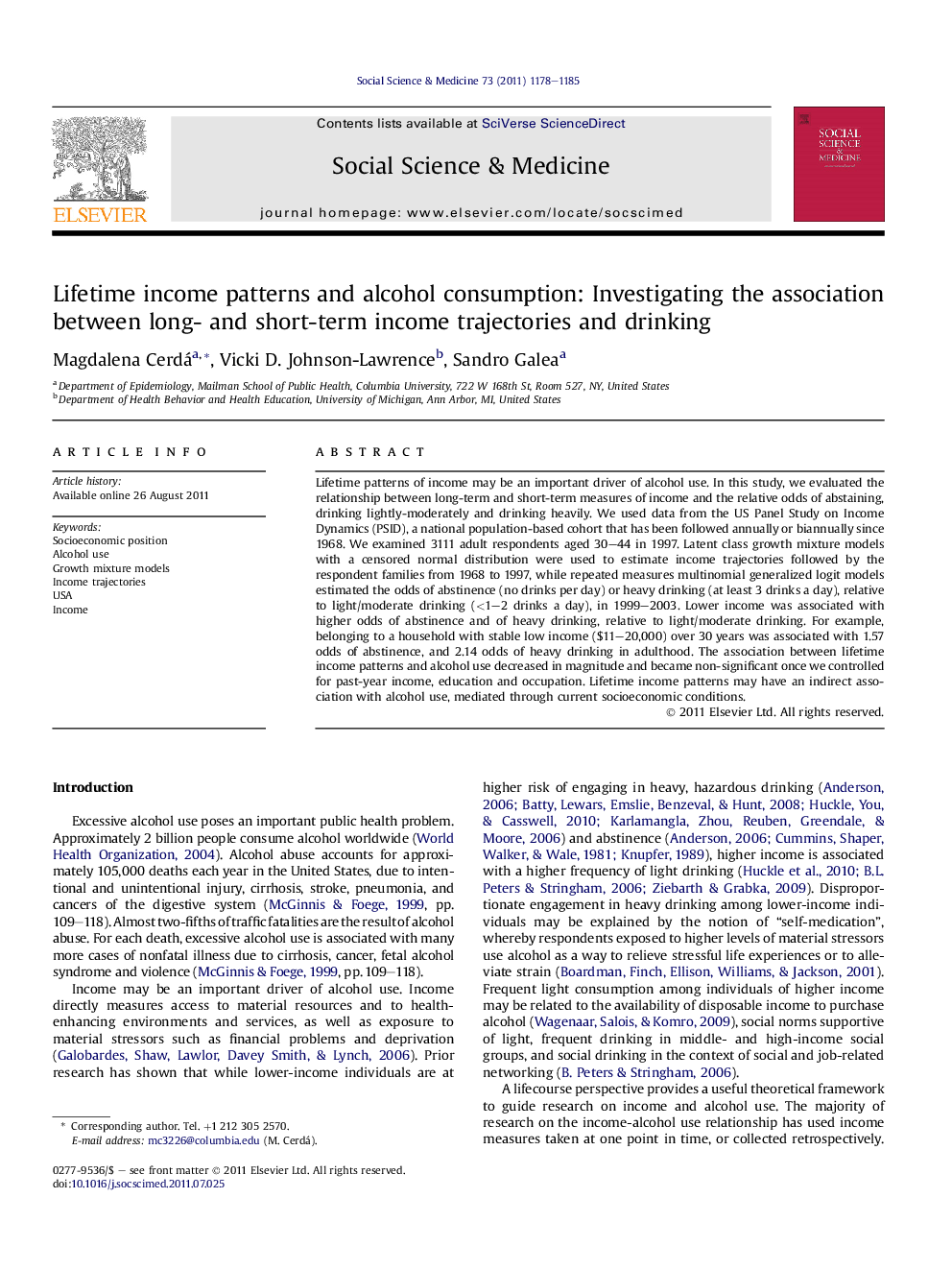| Article ID | Journal | Published Year | Pages | File Type |
|---|---|---|---|---|
| 952856 | Social Science & Medicine | 2011 | 8 Pages |
Lifetime patterns of income may be an important driver of alcohol use. In this study, we evaluated the relationship between long-term and short-term measures of income and the relative odds of abstaining, drinking lightly-moderately and drinking heavily. We used data from the US Panel Study on Income Dynamics (PSID), a national population-based cohort that has been followed annually or biannually since 1968. We examined 3111 adult respondents aged 30–44 in 1997. Latent class growth mixture models with a censored normal distribution were used to estimate income trajectories followed by the respondent families from 1968 to 1997, while repeated measures multinomial generalized logit models estimated the odds of abstinence (no drinks per day) or heavy drinking (at least 3 drinks a day), relative to light/moderate drinking (<1–2 drinks a day), in 1999–2003. Lower income was associated with higher odds of abstinence and of heavy drinking, relative to light/moderate drinking. For example, belonging to a household with stable low income ($11–20,000) over 30 years was associated with 1.57 odds of abstinence, and 2.14 odds of heavy drinking in adulthood. The association between lifetime income patterns and alcohol use decreased in magnitude and became non-significant once we controlled for past-year income, education and occupation. Lifetime income patterns may have an indirect association with alcohol use, mediated through current socioeconomic conditions.
► This longitudinal study investigates the relation between lifetime income patterns, past-year income, and adult alcohol use in the USA. ► The unique design employs growth mixture models to identify heterogeneous 30-year household income patterns. ► Lower lifetime income trajectories were associated with higher odds of adult alcohol abstinence and heavy drinking. ► Lifetime income patterns may have an indirect association with alcohol use, mediated through current socioeconomic position.
